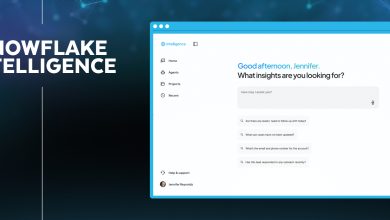
Traditional analytics tools have undoubtedly served their useful purpose but they suffer from a number of flaws that render them ineffective in today’s business environments. They are difficult to scale to meet rising demand, and they lack the real-time insights required to keep up with inventive competitors in fast-paced marketplaces.
AI is revolutionising analytics by enabling levels of speed, scalability, and granularity that are impossible for humans to attain. At the same time, it is the exponential growth of data that is also enabling new subsets of AI technologies such as ML, natural language processing and deep learning to turn data analysis into a proactive driver of strategic decision and action.
The Need for AI-Driven Analytics
In fact, according to IDC, it is estimated that the amount of the global datasphere subject to data analysis will grow by a factor of 50 to 5.2 ZB in 2025. In addition, the amount of analysed data that’s “touched” by these AI systems will grow by a factor of 100 to 1.4ZB in 2025.
It has become imperative for businesses to become not only data-driven but also to monetise data in order to create a competitive advantage. Nevertheless, turning data into insights is still a challenge in the face of voluminous and varied data sources, toughening regulatory requirements, stagnant budgets and fragmented data across hybrid multi-cloud environments.

Thus, there’s a growing need for a modernised data repository and streaming platform that allows businesses to break away from legacy analytical practices and siloed data warehouses. Only then can they leverage capabilities like instantaneous queries and simplified management of their data. On top of that, AI and ML play a crucial role in providing improved insights in terms of operational excellence, business processes, marketing, security applications and more.
This is because AI-driven analytics will enable core prediction applications such as logistics, anomaly detection, and pattern detection. These will unlock powerful and essential use cases that allow businesses to better understand and manage multiple scenarios using the power of data, improve operations and drive new revenue opportunities, and reap a number of benefits, such as:
- Increase in revenue: AI/ML tools, techniques, and algorithms can help uncover new business prospects, market optimisation, and more successful marketing and sales. Companies might better track the market performance of certain products and services, as well as the variables that influence trends.
- Reduced costs: There are more approaches for businesses to discover blind spots in their operational expenditures. Payroll and cloud services are two of the most expensive items that businesses have to deal with. They can utilise AI/ML to delve into the details of why they are overpaying for payroll and cloud computing.
- Ensure high-quality user experiences: Businesses can utilise AI/ML to analyse interactions and transactions and find methods to improve quality and customer experience.
Building the Right Data Foundation
In order to build an effective AI analytics solution, enterprises must first consolidate and integrate data silos and fragmented systems to gain a holistic view of organisational-wide data. In addition, a cloud-based data platform is key as it allows organisations to manage data at scale while reducing operational costs and IT infrastructure requirements. For these reasons, it’s important to choose the right data platform that will provide the proper foundation that suits an organisation’s business processes, data sources and use cases to enable an “intelligent core.”

Cloudera’s modern, cloud-based data platform was designed to provide this foundation. Cloudera Data Platform (CDP) works on multiple clouds and has the core capabilities for end‐to‐end data management, security, and analytics across the full data lifecycle – data distribution, data engineering, data warehousing, transactional data, streaming data, data science, and machine-learning – with a consistent experience that’s portable across infrastructures.
All of which provide organisations with the ability to analyse vast datasets and the opportunity to apply ML and real-time analytics and deliver a shared data experience.
To find out more about how you can transform your business with AI-driven analytics with Cloudera, click here.





